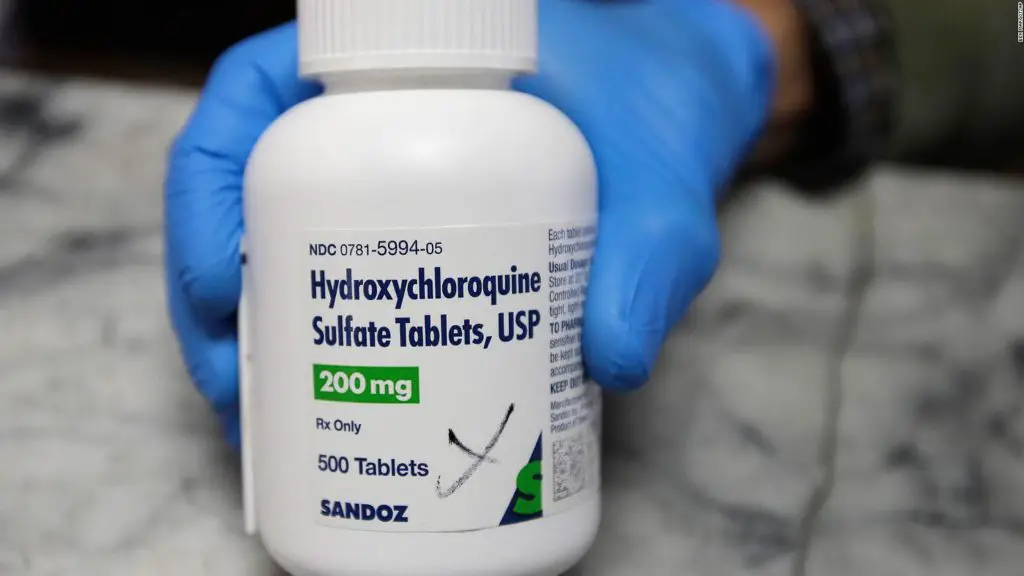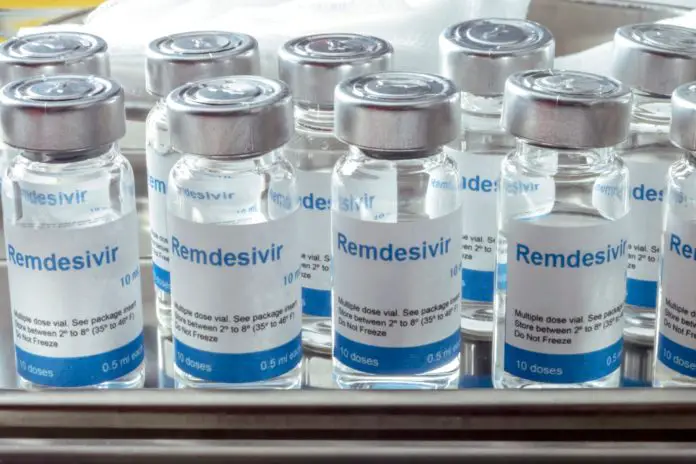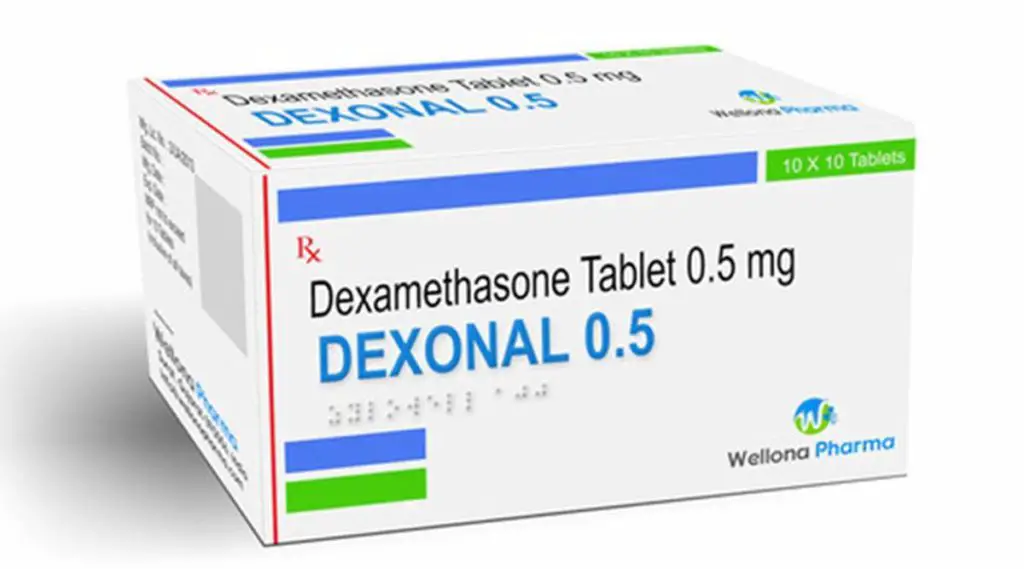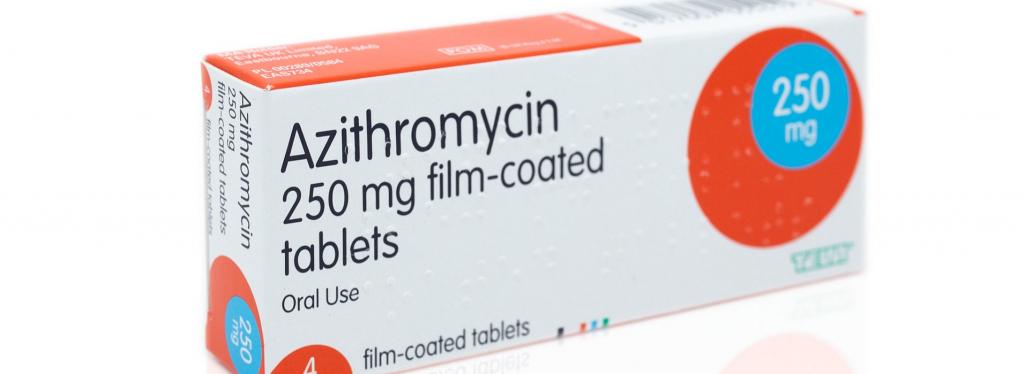Since the end of 2019, the world has been facing the pandemic caused by Coronavirus (COVID-19), also known as Severe Acute Respiratory Syndrome Coronavirus 2 (SARS-CoV-2).
It has infected 123 million people worldwide and has resulted in 2.71 deaths so far. Until now, no drug has been developed specifically to resist covid-19, and all drugs used have been designed for other purposes but have shown efficacy in resisting and killing covid-19.
Antibiotics were and still are widely used to treat inflammation and accompanied infections with COVID-19, but in some cases, antibiotics were not used properly.
A Brief about COVID-19 infection Mechanism and Target Organs
In COVID-19, too many misconceptions are raised, but the matter is clearer and simpler.
We all know that droplets carrying COVID-19 can enter the nose and the throat. The virus uses an angiotensin-converting enzyme 2 (ACE2) receptor, which is present on cells in the nose to invade them.
This receptor is also present throughout the body, which typically helps to control blood pressure.
This RNA virus uses our body cells and mimics its machinery to replicate and invade more cells, and after a few days, symptoms (fever, dry cough, sore throat, loss of smell and taste, etc.) may start to appear.
Pneumonia and Acute Respiratory Distress Syndrome (ARDS)
It all comes down to immunity! If your immune system is unable to defeat the virus in its early stages, the virus can spread to your lungs, thinner branches, and alveoli, which are abundant in cells that express the ACE2 receptor.
In normal circumstances, oxygen crosses through the alveoli into the capillaries, but how does this change during COVID-19?
White blood cells release inflammatory molecules (chemokines) in an effort to destroy and remove the virus, which recruits more immune cells to kill the virus, leaving pus behind. This is what disrupts natural oxygen transfer and induces pneumonia, manifested by coughing, fever, and difficulty breathing.
When things worsen and the immune response is insufficient, you can develop acute respiratory distress syndrome (ARDS), in which all of the immune reactions trigger lung injuries and necrosis, and fluid, mucus, and pus may leak into the lungs and cause severe and life-threatening conditions. Patients struggle to breathe as a result, and they need ventilators at this stage.
Do not miss: COVID-19 vaccination overview
What are Organs Targeted and Affected by COVID-19?
Covid-19 begins in the nose, where certain people lose their sense of smell because the nerve end is damaged there. As mentioned earlier, the lungs are the main target organs where pneumonia and ARDS are developed.
Other target organs:
- Brain: it’s been noticed that some covid-19 patients develop strokes, seizures, confusion, and brain inflammation.
- Eyes: In serious cases, conjunctivitis, or inflammation of the membrane that lines the front of the eye and inner eyelid, is a common condition.
- Heart: Infection can lead to blood clots, heart attacks, and inflammation in the heart.
- Liver: Due to high enzymes level and drugs, the liver can be damaged.
- Kidneys: The virus may attack kidneys directly in developed cases and cause kidney failure, or as a result of whole-body events.
- Intestines: The virus can infect the ACE2 receptor-rich cells in the lower gastrointestinal tract, causing diarrhea sometimes.
Effective and Used Medications Against COVID-19
With all of the organs that the virus targets, as well as the severe complications and deaths it causes, it is necessary to use drugs to limit the virus’s viral impact and destroy it.
For this emergent need, existing drugs were tested and they show effectiveness against the virus, and they are commonly used now.
In the vast majority of cases of covid-19 infection, antiviral and other drugs are not needed. Supportive treatment, fluid therapy, vitamins, and immune-strengthening drugs can be appropriate for those with mild to moderate symptoms.
As you are aware, some people experience serious symptoms that necessitate medical antiviral treatment, which is often accompanied by antibacterial treatment and extensive oxygen support.
Before we begin with the medications, it is important to note that there are different medications and drugs prescribed for each case based on the patient’s condition and symptoms.
Remdesivir
Remdesivir is an antiviral drug that shows its ability to target a range of viruses. It was originally developed over a decade ago to treat hepatitis C and a cold-like virus called respiratory syncytial virus (RSV).
Although Remdesivir wasn’t an effective treatment for either disease, it showed promise against other viruses.
When covid-19 appears, scientists suggest that it may have antiviral effects against it, and they conducted medical trials and tests to check its effectiveness against SARS-CoV-2.
In February 2020, researchers began a randomized, controlled trial of the antiviral to see if it could be used to treat SARS-CoV-2, the coronavirus that causes COVID-19. Early findings in April showed that Remdesivir accelerated recovery in hospitalized patients with severe COVID-19. It was the first drug to be approved for emergency use by the US Food and Drug Administration (FDA) to treat people hospitalized with COVID-19.
Now, How Does Remdesivir works?
Remdesivir works by inhibiting the virus from replicating and limiting the number of copies it can make. Coronaviruses have ribonucleic acid genomes, as previously stated (RNA). Remdesivir prevents the virus from replicating RNA by interfering with one of its key enzymes. This stops the virus from multiplying and invading new cells, allowing the immune system to do its job.
Dexamethasone
Sometimes, immune reactions in our bodies generated against a certain infection can cause a problem itself. Swelling, for example, necrosis and other complications can be caused by immune reactions and this must be considered in the case of covid-19.
Here comes the role of Dexamethasone. First, let us define what Dexamethasone is.
Dexamethasone is a corticosteroid with anti-inflammatory and immunosuppressive properties that are used to treat a variety of conditions. It inhibits the release of inflammatory compounds in the body.
Dexamethasone is used to treat allergies, skin conditions, ulcerative colitis, arthritis, lupus, psoriasis, and breathing disorders, among other things.
It was tested in hospitalized patients with COVID-19 in the United Kingdom’s national clinical trial RECOVERY and was found to have benefits for critically ill patients.
According to preliminary results shared with WHO, the treatment reduced mortality by about one-third in patients on ventilators and by about one-fifth in patients needing only oxygen.
As a result, dexamethasone is strongly advised for covid-19 patients.
Therapeutic Management for Remdesivir and Dexamethasone
For each health condition and complication in Covid-19, there are recommendations for managing patients with varying severities of the infection.
# For Non-hospitalized patients, having mild to moderate symptoms for using any antiviral therapy or even antibody therapy.
Dexamethasone or other corticoids are not recommended to use for such conditions.
By mentioning antibody therapy, let’s take the advantage of it and expand it a little.
Antibody therapy can be effective against viruses. This virus can bind to antibodies, preventing it from binding to cell receptors. Antibodies then form complexes and carry viruses to lymph nodes, where they are killed and eliminated. The same is true for Covid-19, where Anti-SARS-CoV-2 antibodies are designated to aid in the fight against virus infection.
Anti-SARS-CoV-2 antibody-based therapies may have the greatest chance of working in the early stages of infection before the host mounts an effective immune response. In this respect, preliminary data suggests that patients may benefit from receiving anti-SARS-CoV-2 monoclonal antibodies early in the course of infection, despite the lack of data from clinical trials to recommend either for or against the use of any particular treatment in this setting.
# For Hospitalized Patients that do not require oxygen Supply, the use of dexamethasone and other corticoids is not recommended.
Remdesivir may be appropriate in cases where there is a high risk of disease progression.
# Hospitalized Patients that require oxygen Supply, there are 3 recommended approaches.
- Remdesivir: For patients that require minimal oxygen supply.
- Dexamethasone and Remdesivir: For people that their health condition requires more oxygen supply.
- Dexamethasone: In cases where the combination with Remdesivir is not recommended or when Remdesivir is not available.
# Hospitalized Patients that require oxygen supply through High- Flow device for example:
In this case, Dexamethasone is strongly recommended and has proved its efficiency. In rare cases where corticosteroids can be used, baricitinib plus Remdesivir can be used.
Also, Dexamethasone plus Remdesivir can be used.
# Hospitalized Patients who require invasive mechanical ventilation or EMCO, the use of Dexamethasone alone is the only recommended option.
However, other antiviral drugs are used, such as oseltamivir, ganciclovir, lopinavir, and ritonavir, which were given to 76% of SARS-CoV-2 patients at the time of studies in 2020.
Another study found that COVID-19 patients who received lopinavir/ritonavir plus ribavirin had better outcomes than those who received ribavirin alone.
But keep in mind that the antiviral drug Remdesivir, which inhibits the activity of the viral RNA-dependent RNA polymerase, is now the best treatment for COVID-19.
Antibiotics Use for COVID-19
Before we start discussing the use of antibiotics here, let us clarify something important. Antibiotics are drugs containing chemicals that target bacteria only and not viruses. Thus, antibiotics are not used for treating viral infections, the same thing is for covid-19.
Antibiotics usage in covid-19 is prescribed for patients having bacterial co-infections. They are prescribed to treat bacterial infections, limiting their effectiveness in the approach to reduce the mortality rate.
Pneumonia is developed mainly due to these bacterial infections besides acute respiratory syndrome, where the latter develops health risk and may lead to serious conditions and death.
But, why Bacterial coinfections are very common and increased during covid-19 infection?
When SARS-CoV-2 infection occurs and it reaches the lungs, it attaches to the cell through the receptor ACE2, when it replicates and produces many copies (new viruses), it damages the cell in order for the new viruses to reach out the blood and repeat their cycle.
When cells and infrastructure in the lungs are damaged accompanied by the existing immune reactions, more neutrophils and macrophages are attracted to the infection site, promoting more and more inflammation. This ends also by epithelial cells damaging facilitating the bacteria to adhere, invade cells and proliferate causing infections themselves.
What are these Bacteria?
So, now we all know that the mortality of viral infection and in our case covid-19 coronavirus, are caused by many factors such as bacterial co-infection.
These bacteria are mainly influenza-related bacterial infections that contribute to severe illness and mortality during the epidemic and seasonal influenza outbreaks. Example:
Streptococcus pyogenes, Neisseria meningitidis, Moraxella catarrhalis, Streptococcus pneumoniae, Haemophilus influenzae, and Staphylococcus aureus.
Worth mentioning also the possibility of fungal infections accompanied by covid-19 infection.
Azithromycin
Azithromycin is a macrolide antibiotic drug, with a broad spectrum against bacterial infections. It is used for the treatment of respiratory enteric, and genitourinary bacterial infections. It is known for its well-established safety profile, and its effectiveness especially bacterial pathogens in respiratory tract infections such as bronchitis and pneumonia.
However, when it comes to its usage in cases of COVID-19 with bacterial infections, there are some contradictions, between recommendations and exclusions for its usage.
Just a sneak on its work mechanism, it inhibits bacterial protein synthesis in a specific way and thus leading to bacterial cell death.
Azithromycin should not be used in the case of COVID-19 until there is a confirmed bacterial infection through tests and screening.
How can it be helpful in SARS-CoV-2?
As mentioned, uncontrolled and immune responses can cause serious conditions like Pneumonia. This is very frequent in COVID-19, and Azithromycin has the ability to modulate the inflammatory response and interrupt some pathways (those required to have a response) and thus reduce complication of viral pneumonia and can reduce the mortality rate in covid-19 infections.
Some early studies in 2020 showed results that support Azithromycin usage with COVID-19, where its usage combined with hydroxychloroquine, resulted in decrease the viral load in the body.
Antiviral Activity of Azithromycin
Isn’t an antibiotic? How does it have an antiviral effect against Covid-19?
Do not feel confused, some Data showed the ability of Azithromycin to induce certain genes (IFN) that produce some cytokines, which lead to reduced viral replication.
In addition, studies showed that Azithromycin could prevent the viral entry (Covid-19) to cells.
But how?
It interferes between the reaction that occurs between the virus spike protein and the receptor ACE2 found on our cells, however this requires more studies as it is conducted in 2020.
Hydroxychloroquine
To clarify, Hydroxychloroquine is not an antibiotic but rather an anti-parasitic drug that came as a derivative of chloroquine.

Both Hydroxychloroquine and chloroquine are two medications that have proved their effectiveness to treat malaria and autoimmune conditions like rheumatoid arthritis and lupus.
Then, why are we speaking about it?
Chloroquine and hydroxychloroquine were both identified as potential drug candidates who had antiviral activity against the Middle East respiratory syndrome and severe acute respiratory syndrome (SARS) in vitro.
This was concluded from In vitro studies (studies done in a petri dish or test tube rather than in animals or humans) that previously showed that both hydroxychloroquine and chloroquine have antiviral properties against SARS-CoV-2, the virus that causes COVID-19.
In these studies, these medications worked by interfering with the chemical environment of human cell membranes. This blocked the virus from entering and multiplying inside the cells. But keep in mind that a medication tested in vitro with promising results, does not mean that it will work in the human body as well in the same manner.
But, there were a number of conducted studies, where they use hydroxychloroquine and chloroquine on covid-19 hospitalized patients gives positive results. For example, some studies performed in China, France in March 2020, showed that:
A study using chloroquine in China showed that 100 patients who received it did not develop the severe disease but a shorter illness duration compared to those who did not receive chloroquine.
- Another study on 62 randomized people in China revealed that those who received hydroxychloroquine, their cough and fever symptoms improved faster.
- A small study in France reported that people who received hydroxychloroquine tested to have a lower amount of the virus (viral load) in their bodies.
Using Combination of Hydroxychloroquine and Azithromycin to Treat COVID-19 patients
The antiviral activity of aminoquinolines, hydroxychloroquine, and chloroquine in vitro against SARS-CoV-2 has been verified, and a study found a synergistic effect of hydroxychloroquine with azithromycin against SARS-CoV-2.
These drugs emerged as possible low-cost therapies for people suffering from coronavirus disease 2019 (COVID-19), and they earned extensive and speculative coverage in the international press and from the US President.
Using Azithromycin and hydroxychloroquine started in early 2020, and studies were more in vitro. Those which were on hospitalized patients were having some issues and problems like different ages, different hospitals, small numbers and this is the most important as well as different countries.
As we are now in 2021, and also since July 2020, some studies are appearing and showed contradictory results, where they don’t recommend using Azithromycin and Hydroxychloroquine. Some reveal it shows no benefits, others show it increases mortality rate and causes some complications.
By applying more studies on a wider population all over the world from 2020 to 2021, the FDA announced its disapproval for using Hydroxychloroquine and chloroquine as a treatment or prevention for COVID-19. It also states that it makes no sense to believe that these medications are effective against Covid-19, after a year of the pandemic and its usage on many people.
These drugs may be a little effective, but not in the same way on all the population, so the FDA Panel doesn’t recommend anymore the use of chloroquine or hydroxychloroquine with or without azithromycin for the treatment of COVID-19 in hospitalized patients.
Since only a few studies confirmed its positivity and others show its negativity, were using medication don’t have different results from not using it, more studies are needed on larger and various populations.
It is important to remember that Azithromycin is only recommended to treat co-bacterial infections accompanied with COVID-19 and not applied for antiviral purposes.
Sticking to Remdesivir is the best choice as it is the only one showing antiviral covid-19 activity and approved by the FDA.
Other antibiotics, in addition to the well-known Azithromycin, were used to treat co-bacterial infection in SARS-CoV-2 patients, and were classified as critically important antimicrobials for human medicine by the WHO.
- Vancomycin
- Carbapenems
- Tigecycline
- Azithromycin
- Ceftriaxone and linezolid
The Serious Issue Behind Using Antibiotics in Covid-19: Antimicrobial Resistance
Unfortunately, antibiotic prescribing and use were haphazard in covid-19, especially at the start, which is why there is always a need for the clarification we provided.
Many antibiotics are no longer effective because bacteria have established resistance to them. This is attributable to the indiscriminate and excessive use of antibiotics without following directions, rendering them useless and providing little benefit.
Here’s a fact: 30-40% of bacterial species have already developed resistance to azithromycin, which was used during covid-19. Perhaps this is why azithromycin did not show any benefit when used in Covid-19 cases.
This is a serious issue that we should be aware of, especially in Covid-19, where using antibiotics that bacteria are immune to is ineffective and there is a need to use other antibiotics that may or may not have the desired effect.
Antibiotic use in COVID-19 contributes to the development of antibiotic resistance in bacterial co-infection, which may lead to serious problems in the future.
Antibacterial drugs are given to 90% of COVID-19 patients in 2020, according to the data. This massive and rapid antibiotic administration may put bacterial pathogens under a lot of pressure to develop resistance, potentially leading to an increase in drug-resistant bacterial infections in the years following the COVID-19 pandemic.
In the last year, big amounts of antibiotics and antifungals were been used and administered, which definitely requires a warning of its consequences.
Antibiotics such as vancomycin, carbapenems, tigecycline, azithromycin, ceftriaxone, and linezolid till now are saving lives and especially patients with SARS-CoV-2 infections. But with decades, the current and unreasonable wide use of these antibiotics may be the reason for large numbers of death.
Antimicrobial resistance (AMR) currently kills around 700,000 people worldwide each year, including 230,000 from MDR tuberculosis, which is highly dangerous.
Every country has the potential to be affected. Regardless of the COVID-19 pandemic, it was predicted that by 2050, 10 million people would die from an antibiotic-resistant bacterial infection.
This prediction could be altered and shortened due to the devastating effect of the COVID-19 pandemic on antibiotic use.
It’s worth noting that patients who have received high-dose antibiotics are more likely to have drug-resistant bacteria co-infections.
The current pandemic highlights the critical importance of understanding the complex relationship that occurs between viral and bacterial infections.



